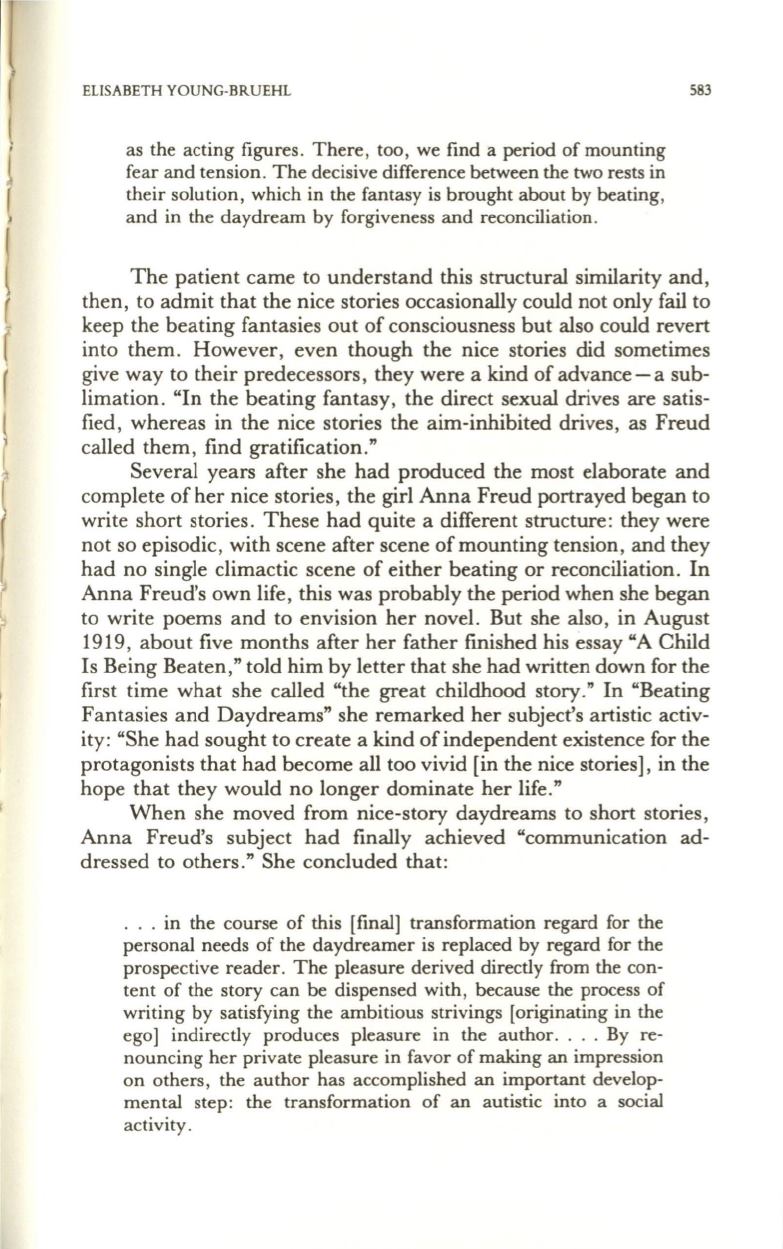
ELISABETH YOUNG·BRUEHL
as the acting figures . There, too, we find a period of mounting
fear and tension . The decisive difference between the two rests in
their solution, which in the fantasy is brought about by beating,
and in the daydream by forgiveness and reconciliation .
583
The patient came to understand this structural similarity and,
then, to admit that the nice stories occasionally could not only fail to
keep the beating fantasies out of consciousness but also could revert
into them. However, even though the nice stories did sometimes
give way to their predecessors, they were a kind of advance - a sub–
limation. "In the beating fantasy, the direct sexual drives are satis–
fied, whereas in the nice stories the aim-inhibited drives, as Freud
called them, find gratification."
Several years after she had produced the most elaborate and
complete of her nice stories, the girl Anna Freud portrayed began to
write short stories . These had quite a different structure: they were
not so episodic, with scene after scene of mounting tension, and they
had no single climactic scene of either beating or reconciliation. In
Anna Freud's own life, this was probably the period when she began
to write poems and to envision her noveL But she also, in August
1919, about five months after her father finished his essay "A Child
Is Being Beaten," told him by letter that she had written down for the
first time what she called "the great childhood story." In "Beating
Fantasies and Daydreams" she remarked her subject's artistic activ–
ity: "She had sought to create a kind of independent existence for the
protagonists that had become all too vivid [in the nice stories], in the
hope that they would no longer dominate her life."
When she moved from nice-story daydreams to short stories,
Anna Freud's subject had finally achieved "communication ad–
dressed to others." She concluded that:
... in the course of this [final] transformation regard for the
personal needs of the daydreamer is replaced by regard for the
prospective reader. The pleasure derived directly from the con–
tent of the story can be dispensed with, because the process of
writing by satisfying the ambitious strivings [originating in the
ego] indirectly produces pleasure in the author.... By re–
nouncing her private pleasure in favor of making an impression
on others, the author has accomplished an important develop–
mental step: the transformation of an autistic into a social
activity.


